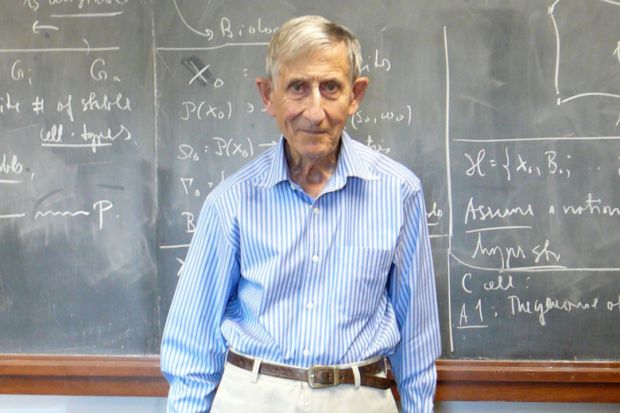I tried very hard to like this book. Honestly, I did. I mean, Freeman Dyson, nuclear physicist and designer of nuclear-powered spacecraft. The Dyson in the Dyson sphere. A top scientific philosopher and thinker, and an excellent writer. Any of his writing and thoughts should be worth reading. So I was excited to be asked to take on this review.
But oh my goodness, this book is a sprawling mess. Dwight Neuenschwander is credited as editor, but he’s really its author. He’s also the director of a science, technology and society course at Southern Nazarene University in Oklahoma, and this book is as much about the course as it is about Dyson and his writing. The connecting strand is that Dyson’s book Disturbing the Universe is the course’s primary textbook, and Dyson has graciously agreed to correspond with students on the course over the years, and answer their questions.
Now, I’m a huge fan of science and society courses, and I’d jump at the chance to teach one. And this book does have some great, solid-gold nuggets about the course content, with my favourite being the anecdote about Neuenschwander’s students being taken to a dissection laboratory to discover that the cadavers they will be dissecting are in fact lawnmower engines. A book about the course itself would be an interesting read. Unfortunately, this narrative gets mixed up with the Dyson question-and-answer sessions, and biographical information about Dyson and his family, and so the book ends up like a vast urban sprawl with no clear road signs. Some of the questions posed by the students are extremely good, and Dyson’s answers are as insightful as I had anticipated, but you have to work hard to find them. This really should be two smaller books, one about the course, and one comprising Dyson’s correspondence. In this case, the sum of the parts is just very confusing.
Then, just to compound the confusion and sprawl, we have a touch of the Fonty McTypefaces in the book design. No fewer than five fonts have been used, each one representing a different “input stream” of information. It reminds me of computer programming in Fortran. You have to read the introduction carefully to find this out, and if you don’t, you’ll face a massive cognitive overload when you start to read the book. If you turn to a page at random, you’re likely to find at least three typefaces being used, which is both disturbing and visually unappealing. It’s impossible to remember which typeface goes with each input stream. Moreover, the Fortran metaphor runs true for the whole book. As scientists of a certain age know, Fortran programs can easily degenerate into an unstructured mess that is impossible for the outsider to decipher.
As a result, I can’t really recommend this book as a good, easy read. It’s a great pity, as there is some really good material in here, but it’s crying out for an editor to edit the prose written by the “editor”. If you want to read Dyson, try Infinite In All Directions as a starting point. His books are much more readable.
Andrew Robinson is a contract instructor in physics, Carleton University, Ottawa. He blogs at Precarious Physicist.
Dear Professor Dyson: Twenty Years of Correspondence Between Freeman Dyson and Undergraduate Students on Science, Technology, Society and Life
Edited by Dwight Neuenschwander
World Scientific, 436pp, £44.00, £24.00 and £19.00
ISBN 9789814675840, 5857 and 5871 (e-book)
Published 1 May 2016
POSTSCRIPT:
Print headline: There’s gold in them thar hills
Register to continue
Why register?
- Registration is free and only takes a moment
- Once registered, you can read 3 articles a month
- Sign up for our newsletter
Subscribe
Or subscribe for unlimited access to:
- Unlimited access to news, views, insights & reviews
- Digital editions
- Digital access to THE’s university and college rankings analysis
Already registered or a current subscriber?




